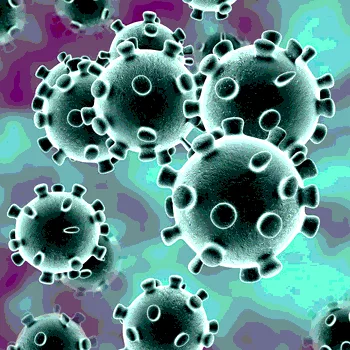Novel Coronavirus (2019-nCoV) and Food Safety: A Time for Facts, Not Panic

As you have likely heard, China is experiencing a serious outbreak of respiratory disease caused by a new coronavirus, designated 2019-nCoV. The outbreak was traced to Wuhan City, which is located in Hubei Province. Chinese public health officials report that the early patients were associated in some way with a large seafood and animal market located in Wuhan. This market was well known for illegally trafficking in dogs and cats as well as exotic animals, including turtles, bats, snakes, rats, hedgehogs, and marmots, all destined for human consumption.
Coronaviruses are a large group of viruses that cause a wide range of respiratory infections in mammals, humans, and birds. The virus group is also responsible for other serious respiratory diseases, including Severe Acute Respiratory Syndrome (SARS) and Middle East Respiratory Syndrome (MERS), but also for a large percentage of common cold infections, which usually occur in the fall and spring of each year. Symptoms usually include fever, lethargy and lack of appetite, sore throats, and dry, non-productive coughs. Occasionally, secondary infections cause more severe respiratory symptoms, including bronchitis, viral pneumonia, or bacterial pneumonia.
Noting these symptoms helps put the outbreak in perspective. The epidemiological analysis of this outbreak is in its early stages, and it is too soon to definitively state how the first human case(s) of infection [index case(s)] occurred. Currently available data indicate the first cases occurred in workers from the seafood and animal market. In other words, these individuals were not consumers of the animal meat being sold in the market, but were likely exposed to it through handling and slaughtering the animals being sold or breathing in viral particles that may have contaminated the animals, working surfaces, and the air. Current cases of 2019-nCoV virus are due to person-to-person transmission and no longer have any association with the Wuhan market or exposure to animals and meat products.
To date, neither China nor the U.S. Centers for Disease Control and Prevention (CDC) has released verifiable data indicating that the early cases were linked to gastrointestinal (GI) infections, which is what we would have seen if workers had consumed meat containing the 2019-nCoV virus. For food safety, this is an important distinction. Although later data could modify this view, it appears that exotic live animals (unidentified as yet) were the source of the virus and thereby involved in the transmission of the virus into humans, but that transmission was not due to the actual consumption of the meat sold in the market.
Mechanical transmission of the virus via meat, particularly if the meat is raw or undercooked, is another matter. This does become a food safety/food handling issue. Additionally, individuals infected with the 2019-nCoV virus, whether they are obviously ill or not showing symptoms, will actively shed the virus in sputum and mucus particles. This shedding potentially contaminates the environment and anything located in that environment, including food products.
Food Personnel Recommendations
Personal hygiene by food handlers and assiduous sanitation of food handling and serving services are both critically important for all food-related establishments. Sick personnel should never be allowed in food handling areas. Public health officials say that asymptomatic infections, particularly those in the early and later stages of a 2019-nCoV virus infection, are highly probable. This means asymptomatic persons can be actively shedding the virus through coughs, sneezes, sputum, and mucous, which can then contaminate foods and food handling surfaces.
Personnel exhibiting respiratory infection symptoms of any degree should be required to stay away from food products and work surfaces. Best practice is to send them home, or better yet, tell them to stay home from work. If 2019-nCoV virus gains a strong foothold in the U.S. personnel requirements should be ramped up to prevent sick personnel from returning to work until 5 days to 1 week after the exhibition of last symptoms. This is standard practice for medical personnel who experience respiratory or gastrointestinal infections.
Currently, there are no approved coronavirus vaccines or anti-viral drugs. Personnel who have recently traveled from China or have been around others who have traveled there, particularly those who traveled in affected parts of China or were around people suffering from respiratory infections, should immediately contact a health professional for instructions. Surveillance of incoming passengers from affected areas of China is currently being conducted at U.S. port of entry airports, including Atlanta, Chicago, Los Angeles, New York’s JFK and San Francisco. Limited international travel restrictions are currently in place, while additional travel restrictions are expected if the human-to-human transmission rates continues to climb.
Travelers should carefully monitor travel health notices related to this outbreak. This information is regularly updated and available at the CDC .
Viral Transmission and Control in Foods
Once a person is infected with a virus, that individual will shed virus particles. In the case of intestinal pathogens, there is large-scale shedding of the infectious particles in stool while the individual exhibits symptoms, but shedding can also occur during asymptomatic incubation and post-symptomatic periods.[1,2] As the Wuhan coronavirus is a respiratory infection, this shedding will primarily take place in the respiratory tract, although some transient viral particles could be found in feces as sputum is swallowed, passing into the intestines and opening the possibility of fecal shedding from the GI tract.
The extent of GI tract shedding is not yet known. In SARS, the virus can still be detected in patients’ stool up to 21 days after the initial onset of symptoms.[3] In MERS, however, a study found that viral RNA was not detectable in the stool samples of the majority of infected patients. In those who were positive, the RNA concentration was low.[4]
Although coronaviruses are not frequent causes of foodborne disease, other viruses, such as hepatitis A and norovirus, have been associated with numerous foodborne disease outbreaks over the years. Food handlers have been the source of contamination in several of these outbreaks. This can be due to direct handling of the food or to contamination of a food contact surface, leading to a secondary source of contamination.
For example, Boxman et al.[5] took environmental swab samples from 23 Dutch restaurants and 4 cruise ships that had been involved in foodborne outbreaks suspected to be caused by an enteric virus. In 14 of the outbreaks, they found samples positive for norovirus.
This type of physical contamination by a food handler can happen at any point along the production chain. In the case of norovirus, most of the foodborne outbreaks have been associated with an ill food handler on the premises of a retail or foodservice establishment. Because of this, control measures have been put in place to reduce the transmission of viruses from food handlers to foods and food surfaces.
Prevention Management
The first line of defense is a disease management system, which simply means preventing workers with symptoms from handling food or being in areas where food is stored or prepared. Unfortunately, this does not completely eliminate the risk, because asymptomatic individuals may be carriers of the virus. The next control measure is to ensure that employees decontaminate their hands. The use of antimicrobial hand soaps is recommended, as alcohol-based sanitizers have not been proven to effectively eliminate viruses from the skin, especially in cases where biomatter (biological debris) or soil is present on the skin.[2,6]
Virus particles can often persist for extended periods of time on surfaces, so it is important to decontaminate food contact surfaces in case there has been any contact with an infected individual. Although research has found that it is difficult to inactivate enteric viruses using common surface disinfectants,[2] research also has shown that common household disinfectants are sufficient to eliminate a coronavirus surrogate, MERS.[7]
Any well-run food processing facility or foodservice establishment already has these procedures in place under current Good Manufacturing Practices, food safety management plans (such as Hazard Analysis and Critical Control plans[8,9] and Food Safety Modernization Act Preventive Controls for Human Foods[10]) and employee training programs. These measures should be sufficient to control the transmission of coronavirus from employees.
Robert A. Norton, Ph.D., is a microbiologist and professor in the Department of Poultry Science at Auburn University who consults widely on food defense. He can be reached at nortora@auburn.edu. Emefa A. Monu, Ph.D., is an assistant professor of food microbiology in the Department of Poultry Science at Auburn. Her current research focuses on alternative intervention methods to reduce bacteria and fungi in food, including the development of natural antimicrobials from plant and bacterial sources and the utilization of novel nonthermal processing techniques. She can be reached at eam0063@auburn.edu.
References
1. Barrabeig, I, et al. 2010. “Foodborne Norovirus Outbreak: The Role of an Asymptomatic Food Handler.” BMC Infect Dis 10:269.
2. World Health Organization. 2008. “Viruses in Food: Scientific Advice to Support Risk Management Activities: Meeting Report.” Microbial Risk Assessment Series 13.
3. Peiris, JSM, et al. 2003. “Clinical Progression and Viral Load in a Community Outbreak of Coronavirus-Associated SARS Pneumonia: A Prospective Study.” The Lancet 361:1767–1772.
4. Corman, VM, et al. 2015. “Viral Shedding and Antibody Response in 37 Patients with Middle East Respiratory Syndrome Coronavirus Infection.” Clin Infect Dis 62:477–483.
5. Boxman, IL, et al. 2009. “Environmental Swabs as a Tool in Norovirus Outbreak Investigation, including Outbreaks on Cruise Ships.” J Food Prot 72:111–119.
6. Todd, EC, et al. 2010. “Outbreaks where Food Workers Have Been Implicated in the Spread of Foodborne Disease. Part 10. Alcohol-Based Antiseptics for Hand Disinfection and Their Comparison with Soaps.” J Food Prot 73:2128–2140.
7. Dellanno, C, Vega, Q, and Boesenberg, D. 2009. The Antiviral Action of Common Household Disinfectants and Antiseptics against Murine Hepatitis Virus, a Potential Surrogate for SARS Coronavirus.” Am J Infect Contr 37:649–652.
8. Food and Drug Administration. 2001. Code of Federal Regulations Title 21, Part 120.
9. U.S. Department of Agriculture. 2019. Code of Federal Regulations Title 9, Part 416 - Sanitation.
10. www.federalregister.gov/documents/2018/09/12/2018-19855/current-good-manufacturing-practice-hazard-analysis-and-risk-based-preventive-controls-for-human.
Looking for quick answers on food safety topics?
Try Ask FSM, our new smart AI search tool.
Ask FSM →








